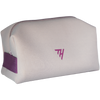Chafing: Treatment, Prevention, and Causes
Chafing is a common problem among athletes and the general population. It is caused by excessive rubbing of skin against skin, or by clothing that rubs against skin.
But don’t worry because in this article we are going to cover what chafing is, the main causes of chafing and how it can be prevented and treated.
Let’s get started.
What Is Chafing?
Chafing is a type of skin irritation that can be caused by constant rubbing or contact with clothing or other materials. A person can experience it in many different places on their body.
In athletes, chafing is most likely to occur on the inner thighs, feet, armpits, groins, and even nipples. The result is an unpleasant feeling of irritated and inflamed skin.
What Causes Chafing?
The problem is common in people who are physically active, sweat a lot, or wear tight clothes. This can also happen when you have a skin condition that makes your skin sensitive to sweat or heat. Chafing can occur as a result of repetitive motions in sports and physical activities.
Chafing can cause pain, itching, and skin irritation. As a result of friction, the skin becomes inflamed and red. There may be swelling and bleeding in extreme cases. The main problem with chafing is that it can be extremely painful, preventing you from moving freely.
How To Prevent Chafing
Chafing can be prevented by identifying and avoiding the cause. Wearing the right clothing is essential. You should wear loose clothing when exercising and avoid cotton because it can soak up sweat and cause friction and chafing. If you already have chafing, you can try the following treatments.
How To Treat Chafing
Give your skin time to heal from chafing before returning to your normal activities. If friction continues, the condition could worsen and lead to infection. There are many ways to treat chafing, depending on how severe it is.
Using anti-chafing products reduces friction between your skin and clothing, protecting your skin from further irritation.
These products can help you alleviate skin chafing:
1. Aloe Vera gel

Aloe vera is the most famous species of the genus Aloe. There are many benefits associated with aloe vera. For example, in addition to treating chafing and preventing skin dryness, it can also be used as an ointment.
Aloe vera gel has antimicrobial, antiviral, antioxidant, and anti-inflammatory properties. Furthermore, aloe vera can promote wound healing and improve skin integrity. Unlike other oils, this substance does not stain clothing.
2. Shea Butter

Shea butter is extracted from the nuts of the African shea tree. Usually, it is dyed yellow, but its raw color is ivory. Various cosmetic products use it as a moisturizer, salve, or lotion.
With its high concentration of vitamins and fatty acids, it is excellent for smoothing, soothing, and conditioning the skin. Shea butter also contains substances that can reduce swelling.
3. Argan Oil

There are many uses for argan oil, including culinary, cosmetic, and medicinal. Research shows that in addition to improving skin elasticity and hydration, argan oil softens and relaxes the skin.
4. Coconut Oil

Coconut oil inhibits bacteria growth on the skin, promotes wound healing, and reduces inflammation. For these reasons, it's possible to soothe chafed skin with coconut oil.
Although the substance may help irritated skin, its effects may not last for long. Coconut oil may need to be reapplied frequently to achieve optimal results.
5. Corticosteroid Creams

A corticosteroid cream is a steroid medicine that is applied directly to the skin to reduce inflammation and irritation.
Steroid creams can contain a number of active ingredients, including antibacterial, antifungal, and calcipotriol agents. It is important to use antimicrobials rarely and for short periods of time in order to reduce antibiotic resistance.
6. Petroleum Jelly

Petroleum jelly is a semisolid jelly-like substance made up of mineral oils and waxes. Thanks to its main ingredient, petroleum, it provides a water-resistant barrier for your skin. As a result, you will be able to heal your skin and keep it moisturized.
Studies have shown that petroleum jelly can heal minor wounds. Petroleum jelly brands claim that by lubricating and reducing friction, they can ease tension in the skin and prevent chafing.
7. Medical treatment
If self-care measures fail to improve your skin and you have severe chafing that is painful, swollen, or bloody, schedule an appointment with your healthcare provider. There may be a need for antibiotic ointment on infected areas.
Summary
Chafing is a common problem for people who are physically active, sweat a lot, or wear tight clothes. It can cause pain, itching, and skin irritation, and may lead to inflammation and redness.
To prevent chafing, wear loose clothing and avoid cotton when exercising. You can try the following treatments if you already have chafing.
Aloe vera can be used to treat chafing, as a moisturizer to prevent skin dryness, and for other purposes. Aside from antimicrobial properties, it has antioxidant and anti-inflammatory properties as well.
Shea butter contains vitamins and fatty acids and can reduce swelling of the skin. Coconut oil may be used to soothe chafed skin. Creams containing corticosteroids are used to reduce inflammation and irritation of the skin. And petroleum Jelly can heal minor wounds and keep the skin moist.
If these methods don’t work and you have severe chafing that is painful, swollen, or bloody, schedule an appointment with your healthcare provider.































Lascia un commento